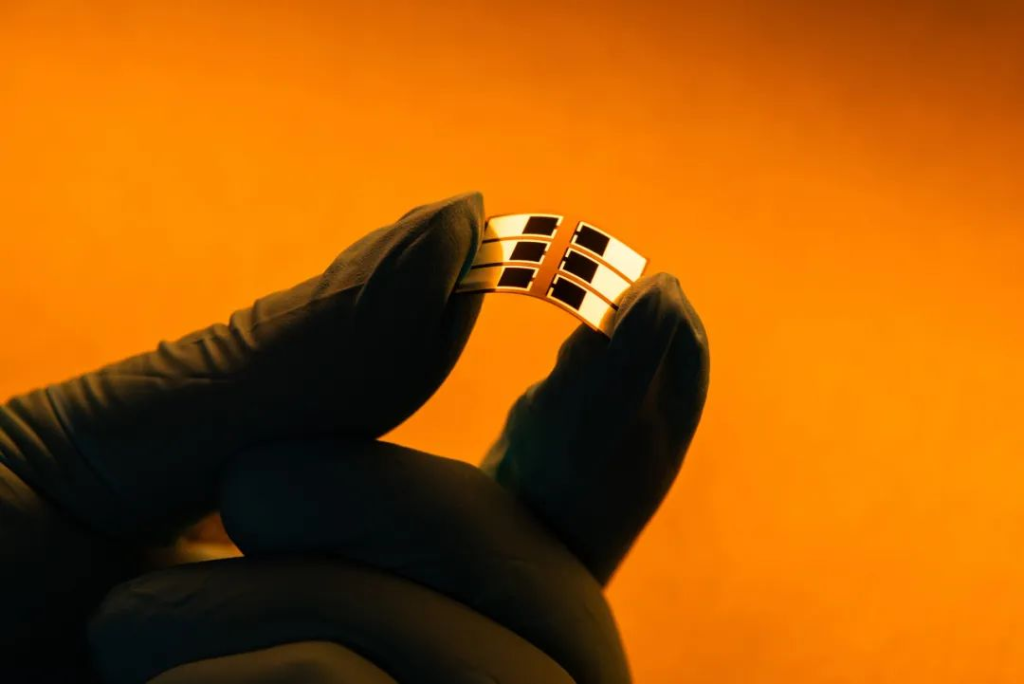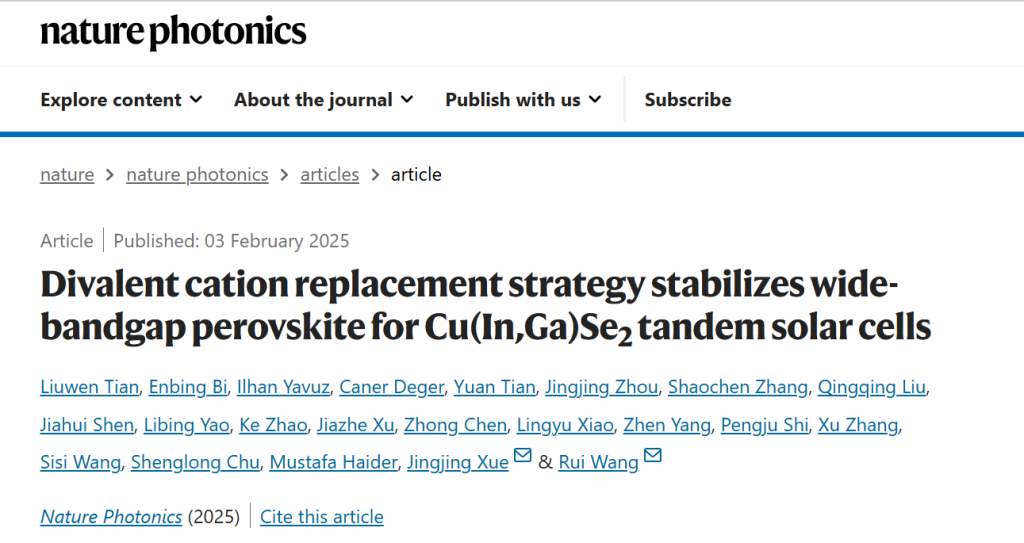Recently, the team led by Wang Rui from the Future Industry Research Center and College of Engineering at Westlake University has made a significant breakthrough in the field of flexible tandem solar cells.

They successfully stacked perovskite and copper indium gallium selenide (CIGS) materials together, achieving a photoelectric conversion efficiency of 23.4%.
On February 3, 2025 (Beijing time), the related research paper titled Divalent cation replacement strategy stabilizes wide-bandgap perovskite for Cu(In,Ga)Se2 tandem solar cells was published in Nature Photonics.

If a single-junction perovskite solar cell is likened to a “single-layer cake,” then a tandem solar cell is akin to a multi-layered cake with different flavors. Each layer of cake corresponds to a different semiconductor material layer, and each layer can “capture” specific wavelengths of sunlight. This allows it to absorb a broader spectrum of sunlight energy compared to “single-layer” cells, converting sunlight into electricity more efficiently and breaking through the efficiency ceiling of single-junction solar cells.
Even more remarkable is that this is a flexible and thin tandem solar cell, with a thickness equivalent to the diameter of a human hair. It holds promise for future applications on irregular surfaces such as buildings, automobiles, aircraft, and flexible wearable devices.


